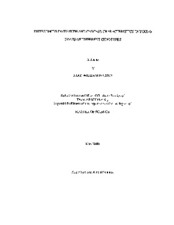| dc.description.abstract | One hundred seventy five spring born wether goats consisting of five breeds: Boer-Spanish (BxS), Boer-Angora (BxA), Angora-Spanish (AxS), Spanish (S), Angora (A), and 12 Boer-Spanish intact males (BxSint) were used. Wethers were randomly assigned by breedtype to pen and treatment (11hd in each of 2 pens and 13 hd on pasture), while BxSint were divided into 2 pens each with 6 hd. Goats had ad libitum access to feed containing 64 % TDN and 14% CP. Goats were adjusted to feed for 20 d then weighed in 14 d intervals for 154 d with refusals taken every 3 d. Pasture goats were grazed on native Texas range and weighed on the same 14 d interval as fed goats. Goats were slaughtered, chilled and measurements were taken. BxS had the highest AGD followed by the BxA and S (143 g/d, 119 g/d and 116 g/d). A and SxA had the lowest ADG (81g/d and 91 g/d). Feed efficiency and intake followed the same trend as ADG with BxS consuming the most feed (1.15 kg/hd/d) and A consuming the least (.89 kg/hd/d). BxS were the most efficient while A were least efficient (7.55 kg/kg vrs 11.70 kg/kg). Generally, BxS had the heaviest carcasses, least fat at the 12th rib, largest loineye area, largest leg circumference, highest percent kidney and pelvic fat (KP), and produced the longest carcasses. Generally A had the lightest carcasses, lowest dressing percentage, most fat at the 12th rib, smallest loineye area, smallest leg circumferences, lowest percent KP, and shortest carcasses. Goats did deposit more fat in their body wall than over their loineyes (1.91 cm vrs .16 cm- all breed avg.). Few differences were observed due to breed type in pasture goats. A were removed from this portion of the study due to loss in numbers from predation and starvation. Fed goats gained faster and produced fatter, heavier muscled carcasses than pasture goats. Castration increased feed efficiency, percent hindsaddle, body wall thickness and percent KP; while decreasing leg circumference and carcass length. | en |


